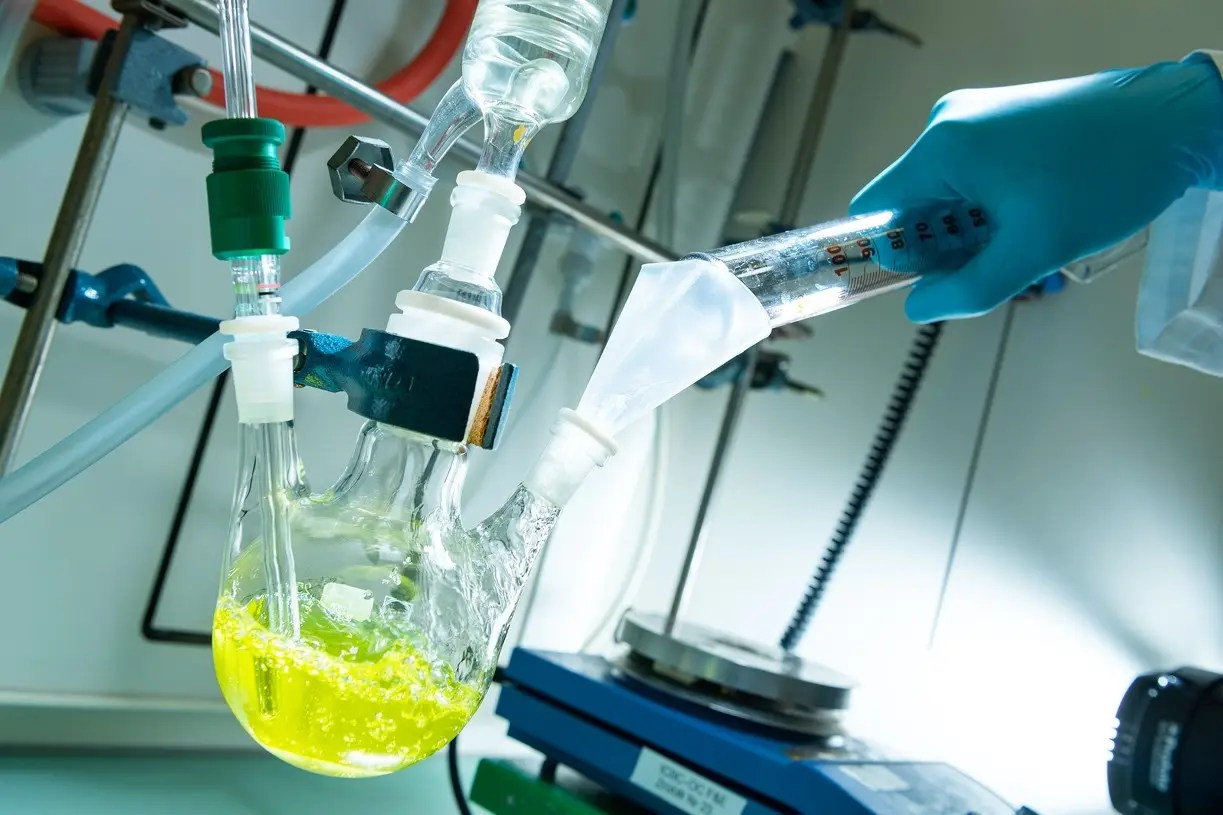Potent active ingredient to combat measles developed
Despite the vaccines available, the measles infection is the cause of more than 100,000 deaths worldwide every year. Antiviral drugs are also required to keep the virus at bay. A research team led by medicinal chemist Rainer Riedl has developed a new antiviral active ingredient to combat the measles virus. The extraordinary thing about this active ingredient is that it does not combat the measles virus directly, but rather targets the part of the human host cell that the virus needs in order to multiply. This means that it remains effective even if the virus mutates.

Two years ago, the Centre for Drug Discovery and Pharmaceutical Product Development at the Institute of Chemistry and Biotechnology launched an ambitious research project (media release in German)(PDF 104,1 KB) in collaboration with two research groups from the University of Bern headed by Dimitrios Fotiadis and Philippe Plattet. As part of a project that was provided with CHF 2.1 million in funding by the Swiss National Science Foundation, the researchers planned to develop active ingredients to combat the measles virus as well as to gain a better understanding of the mechanisms behind virus mutations. This is because one of the main challenges in the production of antiviral active ingredients is that viruses mutate rapidly and become resistant to them. These mutant variants are a major problem for the global healthcare system, which the COVID-19 pandemic is emphatically showing us at the moment.
Potent active ingredient to combat several types of viruses found
The researchers have now developed a potent antiviral active ingredient to combat the measles virus and presented their findings in a publication in the ASM mBIO scientific journal. Encouragingly, the active ingredient is effective against several types of viruses for which there were previously no approved active ingredients. Besides the measles virus, these include the RS virus, which is particularly common in infants, the Nipah virus and the canine distemper virus.
Active ingredient resilient to the formation of resistance
The new active ingredient has demonstrated that it is extremely resilient to the formation of resistance. Even after 80 days of treatment, it was not possible to find any viral resistance. The antiviral strategy targeting the host cell clearly suppresses the generation of viral escape variants. The targeting of the host cell also explains why the active ingredient is widely effective against several types of viruses, which belong to the same virus family and therefore use similar host paths.
Laboratories around the world had already been working on antiviral active ingredients to combat measles. However, they have not been successful in their attempts to develop drugs for clinical use. This situation could change in the future, as host factors are generally considered to be a promising field for the development of antiviral active ingredients. “What is particularly interesting for us is what we do not yet know, i.e. what our active ingredient does inside the host cell at a molecular level to ensure that the viruses can no longer reproduce,” explains Rainer Riedl. This is what the researchers are currently trying to find out within the Swiss National Science Foundation-funded project, which will run until 2024.